Creating Demunks: What It Takes To Create A Collection of 5555 NFTs With An Investment Of As Little As $150
Creating Demunks: What It Takes To Create A Collection of 5555 NFTs With An Investment Of As Little As $150
Creating Demunks: What It Takes To Create A Collection of 5555 NFTs With An Investment Of As Little As $150
Design
/
Vraj Patel
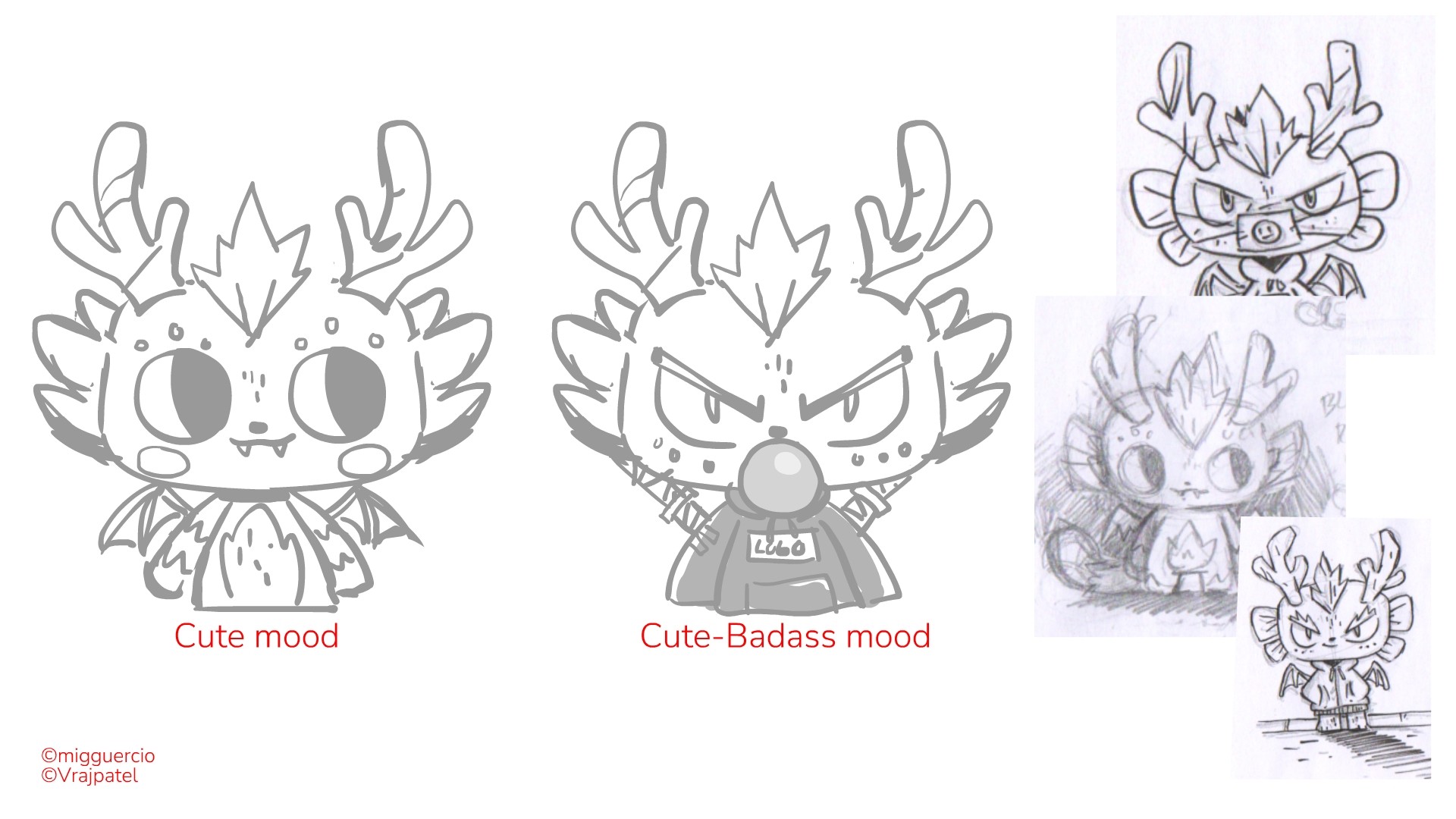


Source:
Vraj Patel
In the dynamic world of design, the marriage of creativity and organization is where true magic happens. Design project management serves as the compass that navigates the journey from concept to completion, ensuring that every stroke of creativity aligns with strategic goals and deadlines. In this comprehensive guide, we delve into the essential principles of effective design project management to help you orchestrate seamless and successful creative endeavors.
1. Establish Clear Objectives and Scope Definition:
Before the first sketch is drawn or the initial code is written, it's crucial to lay a solid foundation. Clearly defining the objectives of the design project and establishing its scope are paramount. What are the goals? Who is the target audience? What deliverables are expected? By answering these questions upfront, you set the stage for a focused and purposeful project.
2. Foster Collaboration and Communication:
Design is inherently a collaborative process. Establishing open lines of communication from the outset is essential. Regular team meetings, brainstorming sessions, and feedback loops are vital for ensuring everyone is on the same page. Leveraging tools like project management platforms, collaborative design software, and communication channels fosters a culture of teamwork and ensures effective collaboration.
3. Set Realistic Timelines and Milestones:
Time is both a constraint and a valuable resource in design project management. Breaking down the project into manageable phases, each with its own set of milestones, is crucial. Realistic timelines not only keep the team on track but also allow for adjustments and iterations. It's important to strike the delicate balance between creativity and deadlines.

Source: Vraj Patel
4. Embrace Flexibility: Iteration is Key:
Design is an iterative process. Embracing flexibility in your project management approach is essential. Anticipate and welcome changes, feedback, and new insights. A well-managed design project is not rigid but adaptable, allowing for continuous improvement and refinement.
5. Utilize Design Tools and Technologies:
In the digital age, design tools and technologies are indispensable assets for efficient project management. From prototyping tools to version control systems, leveraging the advancements in design technology streamlines workflows, enhances collaboration, and contributes to the overall efficiency of the design process.
6. Ensure Quality Assurance and Testing:
Maintaining the integrity of your design is paramount. Implementing robust quality assurance and testing processes is essential. Whether it's user testing for a new app interface or proofing for a print design, meticulous attention to detail is crucial. A well-managed design project includes thorough testing phases to identify and rectify any issues before the final delivery.
7. Foster Client Collaboration: Building Lasting Partnerships:
In many design projects, client collaboration is integral to success. Maintaining transparent communication with clients, involving them in key decision-making processes, and seeking their input throughout the project are critical. A collaborative approach fosters trust and often leads to more satisfying end results.
8. Celebrate Success and Learn from Challenges:
At the conclusion of each design project, take the time to celebrate successes and achievements. Equally important is the post-project evaluation. What worked well? What challenges were encountered, and how can they be addressed in future projects? Learning from both triumphs and setbacks is the cornerstone of continuous improvement.
In conclusion, mastering design project management is the key to unlocking the full potential of creative endeavors. By implementing the principles outlined in this guide – from clear objectives to flexible adaptation and client collaboration – you pave the way for design projects that not only meet expectations but exceed them. Embrace the art of design project management, and watch your creative visions seamlessly come to life.
In the dynamic world of design, the marriage of creativity and organization is where true magic happens. Design project management serves as the compass that navigates the journey from concept to completion, ensuring that every stroke of creativity aligns with strategic goals and deadlines. In this comprehensive guide, we delve into the essential principles of effective design project management to help you orchestrate seamless and successful creative endeavors.
1. Establish Clear Objectives and Scope Definition:
Before the first sketch is drawn or the initial code is written, it's crucial to lay a solid foundation. Clearly defining the objectives of the design project and establishing its scope are paramount. What are the goals? Who is the target audience? What deliverables are expected? By answering these questions upfront, you set the stage for a focused and purposeful project.
2. Foster Collaboration and Communication:
Design is inherently a collaborative process. Establishing open lines of communication from the outset is essential. Regular team meetings, brainstorming sessions, and feedback loops are vital for ensuring everyone is on the same page. Leveraging tools like project management platforms, collaborative design software, and communication channels fosters a culture of teamwork and ensures effective collaboration.
3. Set Realistic Timelines and Milestones:
Time is both a constraint and a valuable resource in design project management. Breaking down the project into manageable phases, each with its own set of milestones, is crucial. Realistic timelines not only keep the team on track but also allow for adjustments and iterations. It's important to strike the delicate balance between creativity and deadlines.

Source: Vraj Patel
4. Embrace Flexibility: Iteration is Key:
Design is an iterative process. Embracing flexibility in your project management approach is essential. Anticipate and welcome changes, feedback, and new insights. A well-managed design project is not rigid but adaptable, allowing for continuous improvement and refinement.
5. Utilize Design Tools and Technologies:
In the digital age, design tools and technologies are indispensable assets for efficient project management. From prototyping tools to version control systems, leveraging the advancements in design technology streamlines workflows, enhances collaboration, and contributes to the overall efficiency of the design process.
6. Ensure Quality Assurance and Testing:
Maintaining the integrity of your design is paramount. Implementing robust quality assurance and testing processes is essential. Whether it's user testing for a new app interface or proofing for a print design, meticulous attention to detail is crucial. A well-managed design project includes thorough testing phases to identify and rectify any issues before the final delivery.
7. Foster Client Collaboration: Building Lasting Partnerships:
In many design projects, client collaboration is integral to success. Maintaining transparent communication with clients, involving them in key decision-making processes, and seeking their input throughout the project are critical. A collaborative approach fosters trust and often leads to more satisfying end results.
8. Celebrate Success and Learn from Challenges:
At the conclusion of each design project, take the time to celebrate successes and achievements. Equally important is the post-project evaluation. What worked well? What challenges were encountered, and how can they be addressed in future projects? Learning from both triumphs and setbacks is the cornerstone of continuous improvement.
In conclusion, mastering design project management is the key to unlocking the full potential of creative endeavors. By implementing the principles outlined in this guide – from clear objectives to flexible adaptation and client collaboration – you pave the way for design projects that not only meet expectations but exceed them. Embrace the art of design project management, and watch your creative visions seamlessly come to life.
Technologies We Use:
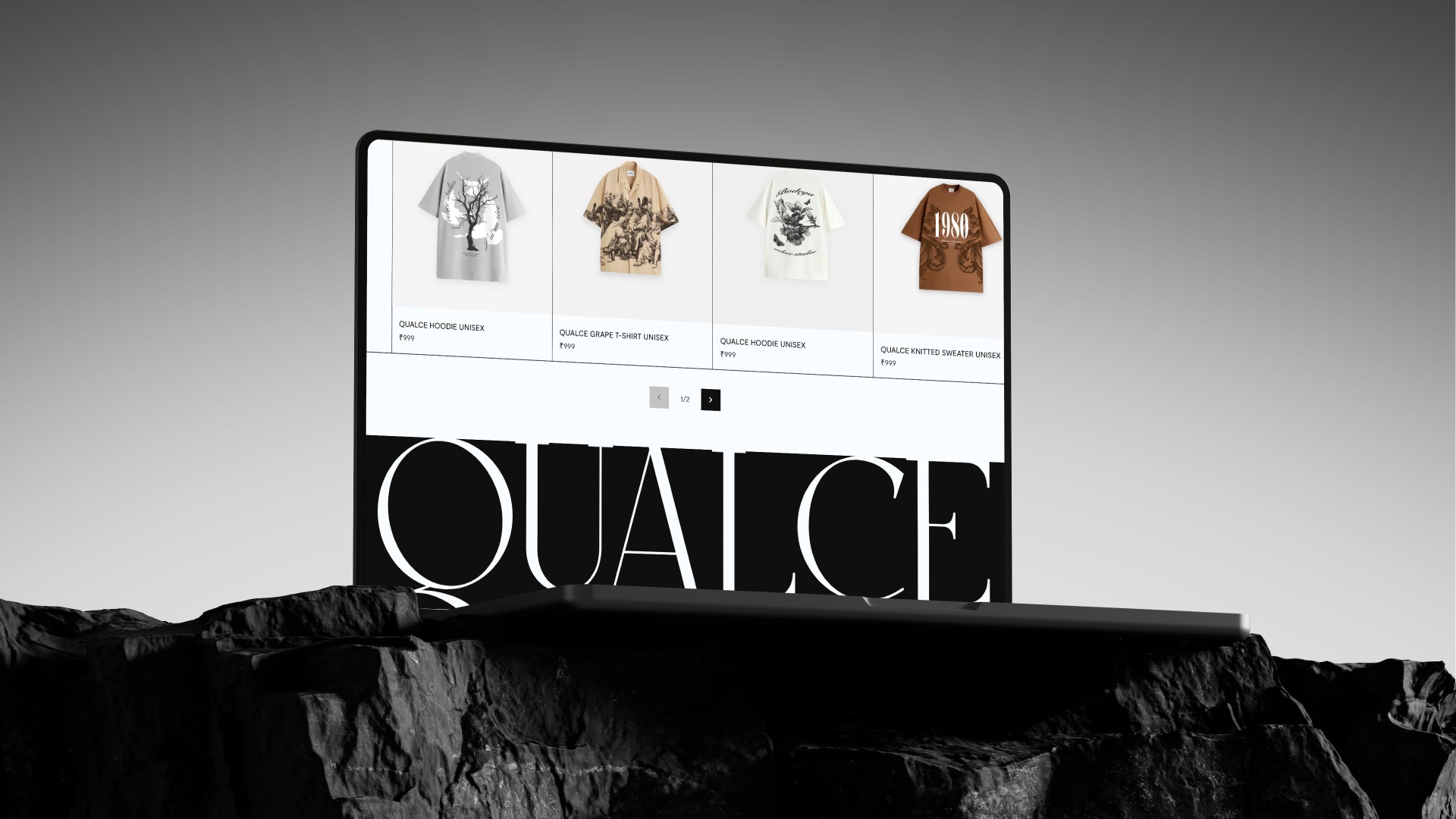
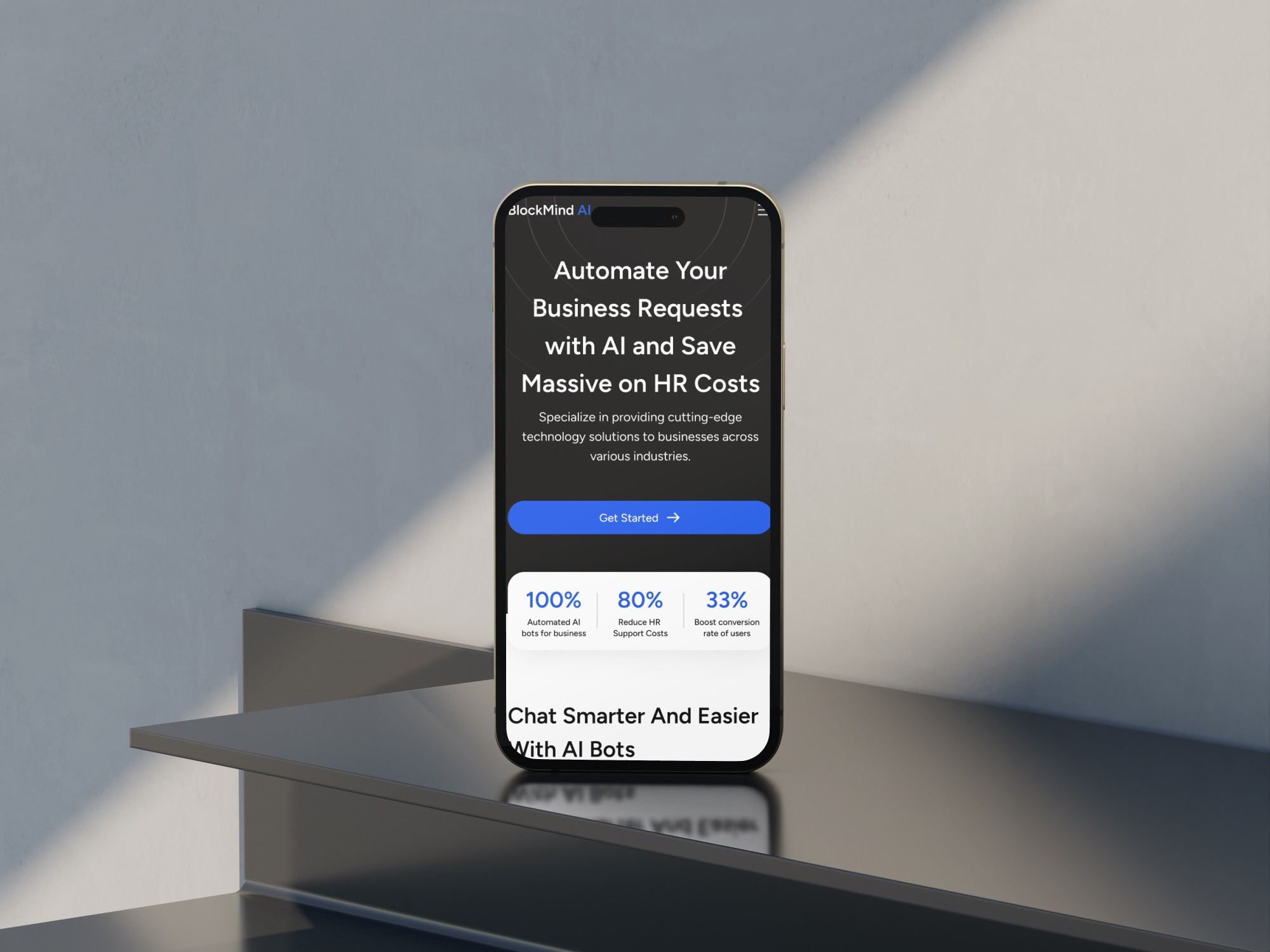
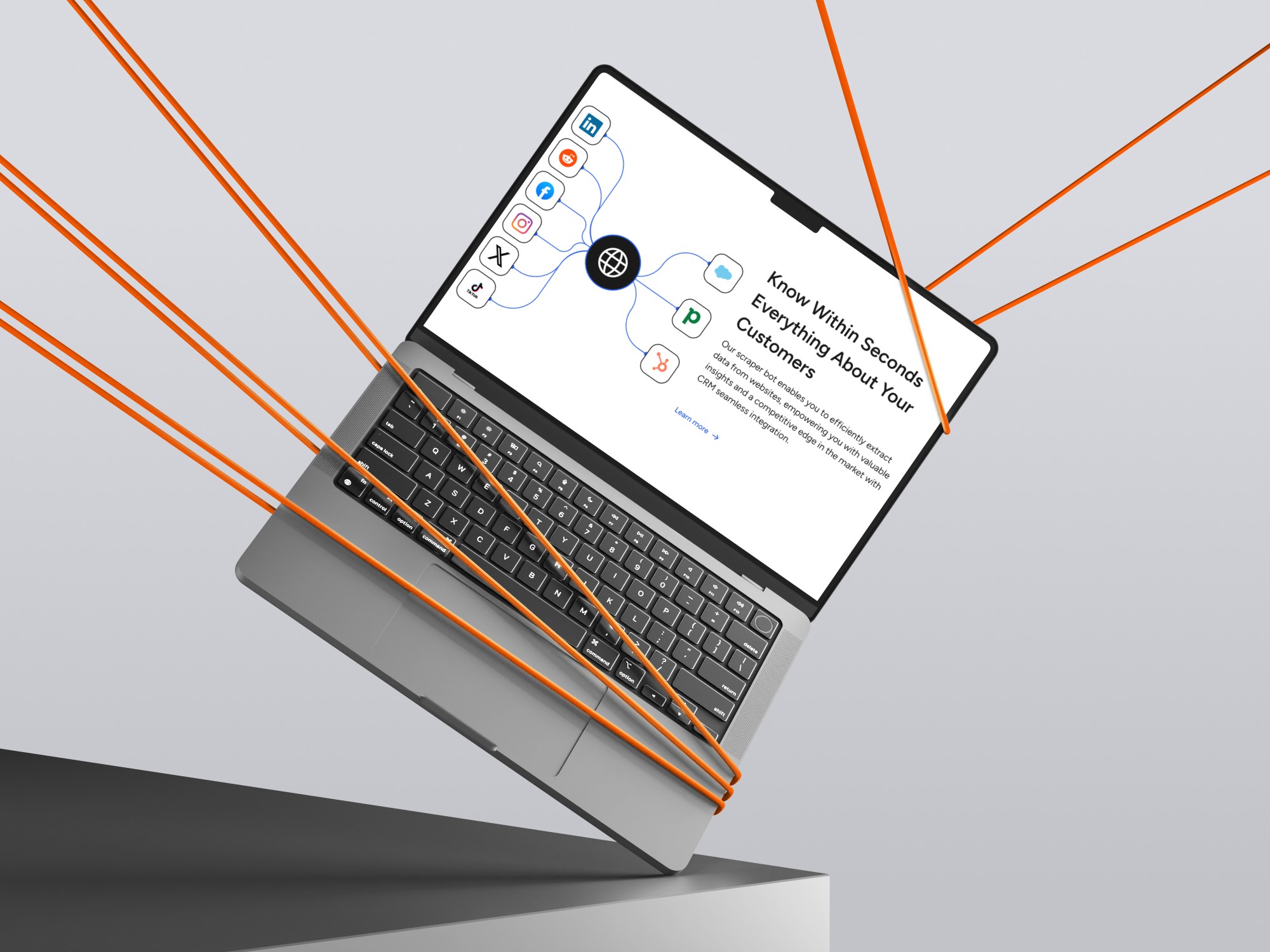
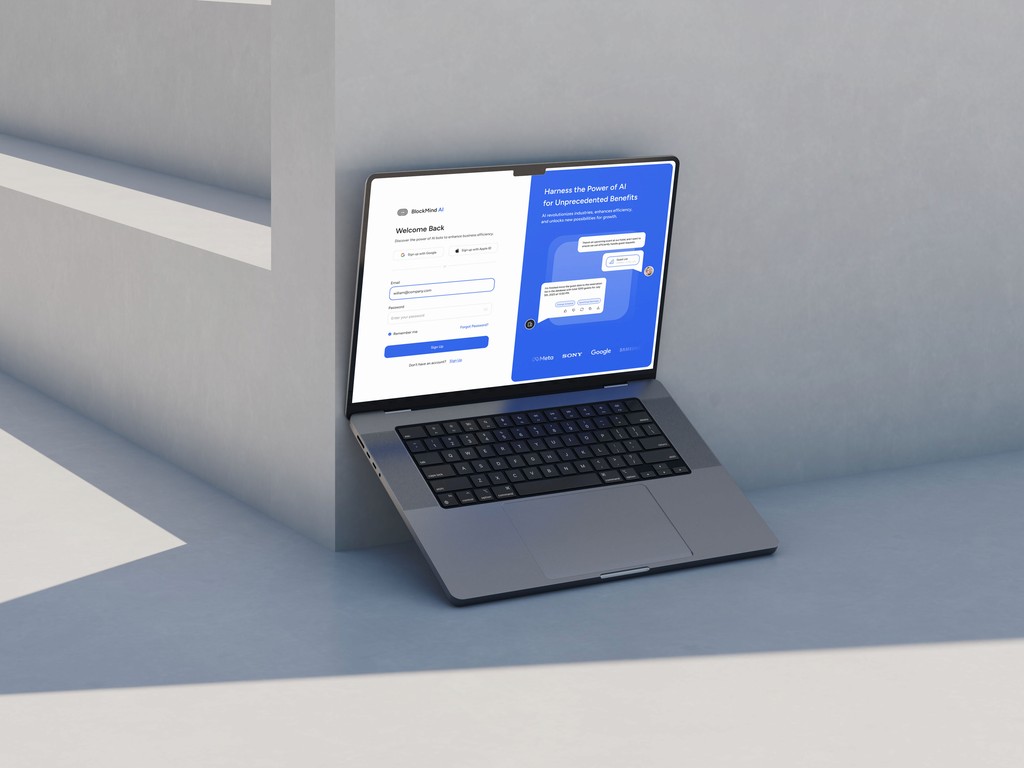
Let’s talk with us
Contact SideFixers today, and let's start the conversation about transforming your ideas into extraordinary digital experiences.
Contact
Site designed and built by SideFixers.
Copyright © 2025 SideFixers. All rights reserved.
Technologies We Use:




Let’s talk with us
Contact SideFixers today, and let's start the conversation about transforming your ideas into extraordinary digital experiences.
Contact
Site designed and built by SideFixers.
Copyright © 2025 SideFixers. All rights reserved.
Technologies We Use:




Let’s talk with us
Contact SideFixers today, and let's start the conversation about transforming your ideas into extraordinary digital experiences.
Contact
Site designed and built by SideFixers.
Copyright © 2025 SideFixers. All rights reserved.
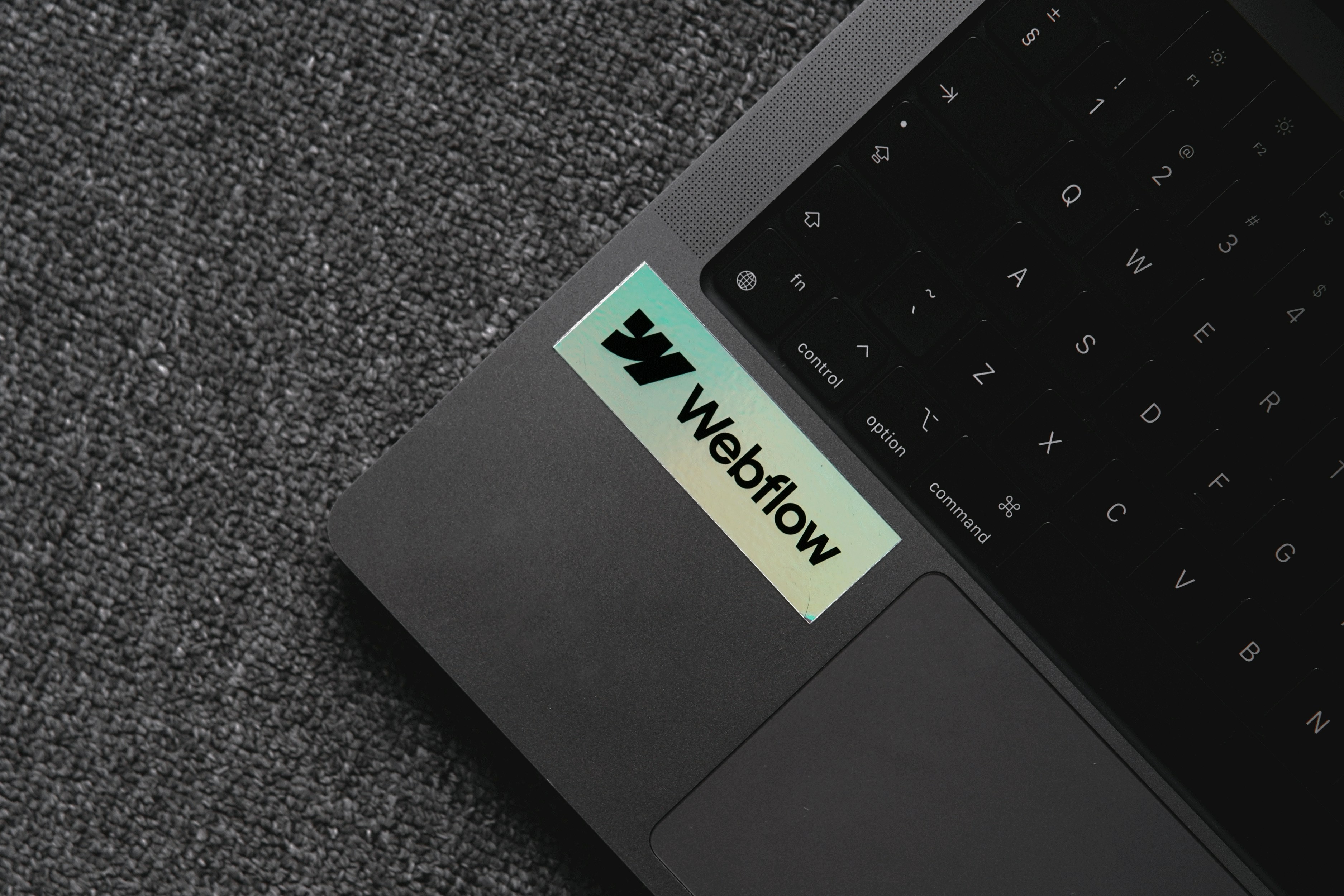
Development
/
Vraj Patel
In today's fast-paced digital world, building a professional website no longer requires deep technical knowledge. Thanks to no-code website builders, anyone can create beautiful, functional websites in a matter of hours. Whether you're a freelancer, a small business owner, or a startup, these platforms offer a wide range of tools to help you get online quickly and easily. Here are the top 10 no-code website builders to consider in September 2024.
1. Framer
Framer continues to shine as one of the most robust no-code website builders, particularly for designers who want pixel-perfect control over their websites. Originally a prototyping tool, Framer has evolved into a full-fledged website builder with smooth animations, interactive components, and seamless collaboration features.
Free Plan: Build up to 3 websites with 1,000 visitors per month.
Paid Plans: The Mini plan starts at $5/month, offering a custom domain and the same visitor limit. For higher traffic and features like CMS collections and code embeds, plans such as Basic ($15/month) and Pro ($30/month) are available.
Why Choose Framer?
Framer’s combination of design-focused too and advanced interactivity makes it ideal for designers who want to focus on the details. If you're familiar with Figma, you'll find Framer's environment intuitive and powerful.
Webflow offers the flexibility of a traditional development environment with the simplicity of a visual builder. It allows users to build custom websites without touching a single line of code, but it also provides an open door to custom coding for those who want to fine-tune their designs.
Free Plan: Start with up to two projects, but with Webflow branding.
Paid Plans: Pricing starts at $14/month for the Basic plan, which includes a custom domain. More advanced plans like CMS ($23/month) offer dynamic content capabilities, making it suitable for blogs, portfolios, and content-rich websites.
Why Choose Webflow?
Webflow is perfect for designers and agencies that need more advanced features, particularly around content management and responsive design. It’s also ideal for those who want to take advantage of custom code later down the line.
Wix Studio offers everything users love about Wix, but with additional design freedom and control over layouts. This tool is great for those who appreciate Wix’s ease of use but require more flexibility when creating complex websites.
Free Plan: Comes with Wix branding and subdomains.
Paid Plans: Start at $16/month, which includes a custom domain and more storage space. Business and e-commerce plans start at $27/month, ideal for companies needing a robust online store .
Why Choose Wix Studio?
Wix Studio offers an intuitive user experience while also providing the ability to create highly customized sites. It's an excellent balance between ease of use and design freedom.
Squarespace remains one of the most popular website builders due to its sleek templates and comprehensive set of features. It’s especially well-suited for creatives looking to showcase portfolios or for small businesses in need of e-commerce features.
Free Plan: Not available, but you can try Squarespace with a 14-day free trial.
Paid Plans: Start at $16/month for personal sites, with higher plans (starting at $23/month) offering advanced e-commerce capabilities .
Why Choose Squarespace?
Squarespace excels in aesthetic appeal, making it the platform of choice for designers, photographers, and creative professionals. Its templates are some of the most beautifully designed in the market, and the platform also provides strong blogging tools.
From the makers of Wix, Editor X offers the next level of website creation for designers and agencies. With **full CSS grid layout control** and advanced responsiveness, it's designed for creating intricate, pixel-perfect websites without the hassle of manual coding.
Free Plan: Build sites with Editor X branding and a Wix subdomain.
Paid Plans: Start at $22/month, including custom domains, expanded bandwidth, and increased storage .
Why Choose Editor X?
For users who want total design control, especially regarding responsiveness and layout precision, Editor X is the top choice. Its powerful tools and flexibility make it ideal for design agencies and developers who need high-level customization.
6. Carrd
Carrd is known for its simplicity and is one of the most cost-effective solutions for creating single-page websites. Ideal for landing pages, portfolios, and online resumes, Carrd’s intuitive interface and minimalistic approach make website building fast and easy.
Free Plan: Build up to three one-page sites with Carrd branding.
Paid Plans: Start at $9/year for custom domains and additional features like form integrations .
Why Choose Carrd?
If you need to build a simple, one-page site quickly and affordably, Carrd is the perfect solution. It’s also an excellent option for portfolios, landing pages, or simple product pages.
Bubble stands out as one of the most powerful no-code platforms, particularly for building complex, dynamic web apps without coding. Whether you're developing a SaaS product, marketplace, or social network, Bubble provides the tools to handle it.
Free Plan: Allows building web apps with limited functionality and Bubble branding.
Paid Plans: Start at $29/month, unlocking custom domains and more advanced app features .
Why Choose Bubble?
For users building **dynamic, interactive web applications** with heavy functionality—like databases, user accounts, and integrations—Bubble is the clear winner. Its flexibility allows for creating virtually any kind of web app without needing technical expertise.
8. Weebly
Weebly, now part of the Square ecosystem, is an easy-to-use builder particularly suited for small businesses looking to combine website creation with simple e-commerce options. It’s intuitive and offers seamless integration with Square’s payment system.
Free Plan: Build websites with Weebly branding and subdomains.
Paid Plans: Start at $12/month for custom domains and expanded storage .
Why Choose Weebly?
For small businesses needing a simple and affordable solution that integrates with Square for payments, Weebly is an ideal choice. It's user-friendly and great for beginners.
9. Tilda
Tilda is a builder focused on storytelling and content-driven websites. It offers a modular block system, allowing you to create long-form content with ease. It's popular with designers and marketers looking to combine beautiful visuals with informative content.
Free Plan: Build one website with Tilda branding.
Paid Plans: Start at $15/month for custom domains and advanced features like more storage and page analytics .
Why Choose Tilda?
Tilda is the best platform for users who need to create **long-form, storytelling websites**, such as blogs, portfolios, or educational sites. Its simple yet effective tools allow for creating engaging and interactive pages.
Zyro is a budget-friendly option for individuals and small businesses looking to build websites quickly. With AI-driven tools that assist in content creation and design, Zyro simplifies the process without sacrificing quality.
Free Plan: Includes Zyro branding and a subdomain.
Paid Plans: Start at $2.90/month, making it one of the most affordable platforms on the list .
Why Choose Zyro?
For users on a tight budget or those looking to get a site up fast, Zyro offers a streamlined, cost-effective solution. It’s a great option for beginners looking for an easy-to-use platform that doesn’t compromise on features.
Conclusion
Every no-code website builder on this list offers a free plan, allowing you to test their tools before committing to a paid subscription. Each platform caters to different needs, from simple portfolios to complex web apps, so be sure to choose one that fits your vision and goals. Paid plans start as low as $2.90/month, offering more advanced features like custom domains, increased storage, and dynamic content.
Pick the right tool, and start building your online presence today!

Development
/
Vraj Patel
In today's fast-paced digital world, building a professional website no longer requires deep technical knowledge. Thanks to no-code website builders, anyone can create beautiful, functional websites in a matter of hours. Whether you're a freelancer, a small business owner, or a startup, these platforms offer a wide range of tools to help you get online quickly and easily. Here are the top 10 no-code website builders to consider in September 2024.
1. Framer
Framer continues to shine as one of the most robust no-code website builders, particularly for designers who want pixel-perfect control over their websites. Originally a prototyping tool, Framer has evolved into a full-fledged website builder with smooth animations, interactive components, and seamless collaboration features.
Free Plan: Build up to 3 websites with 1,000 visitors per month.
Paid Plans: The Mini plan starts at $5/month, offering a custom domain and the same visitor limit. For higher traffic and features like CMS collections and code embeds, plans such as Basic ($15/month) and Pro ($30/month) are available.
Why Choose Framer?
Framer’s combination of design-focused too and advanced interactivity makes it ideal for designers who want to focus on the details. If you're familiar with Figma, you'll find Framer's environment intuitive and powerful.
Webflow offers the flexibility of a traditional development environment with the simplicity of a visual builder. It allows users to build custom websites without touching a single line of code, but it also provides an open door to custom coding for those who want to fine-tune their designs.
Free Plan: Start with up to two projects, but with Webflow branding.
Paid Plans: Pricing starts at $14/month for the Basic plan, which includes a custom domain. More advanced plans like CMS ($23/month) offer dynamic content capabilities, making it suitable for blogs, portfolios, and content-rich websites.
Why Choose Webflow?
Webflow is perfect for designers and agencies that need more advanced features, particularly around content management and responsive design. It’s also ideal for those who want to take advantage of custom code later down the line.
Wix Studio offers everything users love about Wix, but with additional design freedom and control over layouts. This tool is great for those who appreciate Wix’s ease of use but require more flexibility when creating complex websites.
Free Plan: Comes with Wix branding and subdomains.
Paid Plans: Start at $16/month, which includes a custom domain and more storage space. Business and e-commerce plans start at $27/month, ideal for companies needing a robust online store .
Why Choose Wix Studio?
Wix Studio offers an intuitive user experience while also providing the ability to create highly customized sites. It's an excellent balance between ease of use and design freedom.
Squarespace remains one of the most popular website builders due to its sleek templates and comprehensive set of features. It’s especially well-suited for creatives looking to showcase portfolios or for small businesses in need of e-commerce features.
Free Plan: Not available, but you can try Squarespace with a 14-day free trial.
Paid Plans: Start at $16/month for personal sites, with higher plans (starting at $23/month) offering advanced e-commerce capabilities .
Why Choose Squarespace?
Squarespace excels in aesthetic appeal, making it the platform of choice for designers, photographers, and creative professionals. Its templates are some of the most beautifully designed in the market, and the platform also provides strong blogging tools.
From the makers of Wix, Editor X offers the next level of website creation for designers and agencies. With **full CSS grid layout control** and advanced responsiveness, it's designed for creating intricate, pixel-perfect websites without the hassle of manual coding.
Free Plan: Build sites with Editor X branding and a Wix subdomain.
Paid Plans: Start at $22/month, including custom domains, expanded bandwidth, and increased storage .
Why Choose Editor X?
For users who want total design control, especially regarding responsiveness and layout precision, Editor X is the top choice. Its powerful tools and flexibility make it ideal for design agencies and developers who need high-level customization.
6. Carrd
Carrd is known for its simplicity and is one of the most cost-effective solutions for creating single-page websites. Ideal for landing pages, portfolios, and online resumes, Carrd’s intuitive interface and minimalistic approach make website building fast and easy.
Free Plan: Build up to three one-page sites with Carrd branding.
Paid Plans: Start at $9/year for custom domains and additional features like form integrations .
Why Choose Carrd?
If you need to build a simple, one-page site quickly and affordably, Carrd is the perfect solution. It’s also an excellent option for portfolios, landing pages, or simple product pages.
Bubble stands out as one of the most powerful no-code platforms, particularly for building complex, dynamic web apps without coding. Whether you're developing a SaaS product, marketplace, or social network, Bubble provides the tools to handle it.
Free Plan: Allows building web apps with limited functionality and Bubble branding.
Paid Plans: Start at $29/month, unlocking custom domains and more advanced app features .
Why Choose Bubble?
For users building **dynamic, interactive web applications** with heavy functionality—like databases, user accounts, and integrations—Bubble is the clear winner. Its flexibility allows for creating virtually any kind of web app without needing technical expertise.
8. Weebly
Weebly, now part of the Square ecosystem, is an easy-to-use builder particularly suited for small businesses looking to combine website creation with simple e-commerce options. It’s intuitive and offers seamless integration with Square’s payment system.
Free Plan: Build websites with Weebly branding and subdomains.
Paid Plans: Start at $12/month for custom domains and expanded storage .
Why Choose Weebly?
For small businesses needing a simple and affordable solution that integrates with Square for payments, Weebly is an ideal choice. It's user-friendly and great for beginners.
9. Tilda
Tilda is a builder focused on storytelling and content-driven websites. It offers a modular block system, allowing you to create long-form content with ease. It's popular with designers and marketers looking to combine beautiful visuals with informative content.
Free Plan: Build one website with Tilda branding.
Paid Plans: Start at $15/month for custom domains and advanced features like more storage and page analytics .
Why Choose Tilda?
Tilda is the best platform for users who need to create **long-form, storytelling websites**, such as blogs, portfolios, or educational sites. Its simple yet effective tools allow for creating engaging and interactive pages.
Zyro is a budget-friendly option for individuals and small businesses looking to build websites quickly. With AI-driven tools that assist in content creation and design, Zyro simplifies the process without sacrificing quality.
Free Plan: Includes Zyro branding and a subdomain.
Paid Plans: Start at $2.90/month, making it one of the most affordable platforms on the list .
Why Choose Zyro?
For users on a tight budget or those looking to get a site up fast, Zyro offers a streamlined, cost-effective solution. It’s a great option for beginners looking for an easy-to-use platform that doesn’t compromise on features.
Conclusion
Every no-code website builder on this list offers a free plan, allowing you to test their tools before committing to a paid subscription. Each platform caters to different needs, from simple portfolios to complex web apps, so be sure to choose one that fits your vision and goals. Paid plans start as low as $2.90/month, offering more advanced features like custom domains, increased storage, and dynamic content.
Pick the right tool, and start building your online presence today!

Development
/
Vraj Patel
In today's fast-paced digital world, building a professional website no longer requires deep technical knowledge. Thanks to no-code website builders, anyone can create beautiful, functional websites in a matter of hours. Whether you're a freelancer, a small business owner, or a startup, these platforms offer a wide range of tools to help you get online quickly and easily. Here are the top 10 no-code website builders to consider in September 2024.
1. Framer
Framer continues to shine as one of the most robust no-code website builders, particularly for designers who want pixel-perfect control over their websites. Originally a prototyping tool, Framer has evolved into a full-fledged website builder with smooth animations, interactive components, and seamless collaboration features.
Free Plan: Build up to 3 websites with 1,000 visitors per month.
Paid Plans: The Mini plan starts at $5/month, offering a custom domain and the same visitor limit. For higher traffic and features like CMS collections and code embeds, plans such as Basic ($15/month) and Pro ($30/month) are available.
Why Choose Framer?
Framer’s combination of design-focused too and advanced interactivity makes it ideal for designers who want to focus on the details. If you're familiar with Figma, you'll find Framer's environment intuitive and powerful.
Webflow offers the flexibility of a traditional development environment with the simplicity of a visual builder. It allows users to build custom websites without touching a single line of code, but it also provides an open door to custom coding for those who want to fine-tune their designs.
Free Plan: Start with up to two projects, but with Webflow branding.
Paid Plans: Pricing starts at $14/month for the Basic plan, which includes a custom domain. More advanced plans like CMS ($23/month) offer dynamic content capabilities, making it suitable for blogs, portfolios, and content-rich websites.
Why Choose Webflow?
Webflow is perfect for designers and agencies that need more advanced features, particularly around content management and responsive design. It’s also ideal for those who want to take advantage of custom code later down the line.
Wix Studio offers everything users love about Wix, but with additional design freedom and control over layouts. This tool is great for those who appreciate Wix’s ease of use but require more flexibility when creating complex websites.
Free Plan: Comes with Wix branding and subdomains.
Paid Plans: Start at $16/month, which includes a custom domain and more storage space. Business and e-commerce plans start at $27/month, ideal for companies needing a robust online store .
Why Choose Wix Studio?
Wix Studio offers an intuitive user experience while also providing the ability to create highly customized sites. It's an excellent balance between ease of use and design freedom.
Squarespace remains one of the most popular website builders due to its sleek templates and comprehensive set of features. It’s especially well-suited for creatives looking to showcase portfolios or for small businesses in need of e-commerce features.
Free Plan: Not available, but you can try Squarespace with a 14-day free trial.
Paid Plans: Start at $16/month for personal sites, with higher plans (starting at $23/month) offering advanced e-commerce capabilities .
Why Choose Squarespace?
Squarespace excels in aesthetic appeal, making it the platform of choice for designers, photographers, and creative professionals. Its templates are some of the most beautifully designed in the market, and the platform also provides strong blogging tools.
From the makers of Wix, Editor X offers the next level of website creation for designers and agencies. With **full CSS grid layout control** and advanced responsiveness, it's designed for creating intricate, pixel-perfect websites without the hassle of manual coding.
Free Plan: Build sites with Editor X branding and a Wix subdomain.
Paid Plans: Start at $22/month, including custom domains, expanded bandwidth, and increased storage .
Why Choose Editor X?
For users who want total design control, especially regarding responsiveness and layout precision, Editor X is the top choice. Its powerful tools and flexibility make it ideal for design agencies and developers who need high-level customization.
6. Carrd
Carrd is known for its simplicity and is one of the most cost-effective solutions for creating single-page websites. Ideal for landing pages, portfolios, and online resumes, Carrd’s intuitive interface and minimalistic approach make website building fast and easy.
Free Plan: Build up to three one-page sites with Carrd branding.
Paid Plans: Start at $9/year for custom domains and additional features like form integrations .
Why Choose Carrd?
If you need to build a simple, one-page site quickly and affordably, Carrd is the perfect solution. It’s also an excellent option for portfolios, landing pages, or simple product pages.
Bubble stands out as one of the most powerful no-code platforms, particularly for building complex, dynamic web apps without coding. Whether you're developing a SaaS product, marketplace, or social network, Bubble provides the tools to handle it.
Free Plan: Allows building web apps with limited functionality and Bubble branding.
Paid Plans: Start at $29/month, unlocking custom domains and more advanced app features .
Why Choose Bubble?
For users building **dynamic, interactive web applications** with heavy functionality—like databases, user accounts, and integrations—Bubble is the clear winner. Its flexibility allows for creating virtually any kind of web app without needing technical expertise.
8. Weebly
Weebly, now part of the Square ecosystem, is an easy-to-use builder particularly suited for small businesses looking to combine website creation with simple e-commerce options. It’s intuitive and offers seamless integration with Square’s payment system.
Free Plan: Build websites with Weebly branding and subdomains.
Paid Plans: Start at $12/month for custom domains and expanded storage .
Why Choose Weebly?
For small businesses needing a simple and affordable solution that integrates with Square for payments, Weebly is an ideal choice. It's user-friendly and great for beginners.
9. Tilda
Tilda is a builder focused on storytelling and content-driven websites. It offers a modular block system, allowing you to create long-form content with ease. It's popular with designers and marketers looking to combine beautiful visuals with informative content.
Free Plan: Build one website with Tilda branding.
Paid Plans: Start at $15/month for custom domains and advanced features like more storage and page analytics .
Why Choose Tilda?
Tilda is the best platform for users who need to create **long-form, storytelling websites**, such as blogs, portfolios, or educational sites. Its simple yet effective tools allow for creating engaging and interactive pages.
Zyro is a budget-friendly option for individuals and small businesses looking to build websites quickly. With AI-driven tools that assist in content creation and design, Zyro simplifies the process without sacrificing quality.
Free Plan: Includes Zyro branding and a subdomain.
Paid Plans: Start at $2.90/month, making it one of the most affordable platforms on the list .
Why Choose Zyro?
For users on a tight budget or those looking to get a site up fast, Zyro offers a streamlined, cost-effective solution. It’s a great option for beginners looking for an easy-to-use platform that doesn’t compromise on features.
Conclusion
Every no-code website builder on this list offers a free plan, allowing you to test their tools before committing to a paid subscription. Each platform caters to different needs, from simple portfolios to complex web apps, so be sure to choose one that fits your vision and goals. Paid plans start as low as $2.90/month, offering more advanced features like custom domains, increased storage, and dynamic content.
Pick the right tool, and start building your online presence today!

Research
/
Vraj Patel
In the creative world, terms like "agency" and "studio" are often used interchangeably. However, understanding the differences between the two can help businesses make more informed decisions when seeking creative services. Let’s dive into the top 7 differences between an agency and a studio.
1. Scope of Services
Agency:
Agencies typically offer a wide range of services, covering various aspects of marketing, branding, digital strategy, and more. They are often full-service, meaning they handle everything from market research and campaign planning to execution and analytics.
Studio:
Studios, on the other hand, are usually more specialized. They often focus on one or a few areas of expertise, such as graphic design, animation, or photography. Studios provide high-quality work in their niche but may not offer the broader scope of services that an agency does.
2. Team Structure
Agency:
Agencies usually have larger teams that include a mix of professionals like account managers, strategists, designers, copywriters, developers, and analysts. This diverse team composition allows agencies to tackle a variety of projects simultaneously and provide comprehensive solutions.
Studio:
Studios often have smaller, more focused teams. The team may consist of a few key creative professionals who excel in specific disciplines. This structure allows studios to maintain a high level of craftsmanship and attention to detail in their work.
3. Client Relationships
Agency:
Agencies tend to work with clients on a long-term basis, managing ongoing projects and campaigns. The relationship is often more strategic, with the agency acting as an extension of the client’s own team. Agencies often have dedicated account managers who handle client communication and project coordination.
Studio:
Studios usually engage with clients on a project-by-project basis. The focus is often on delivering a specific creative output rather than managing a long-term relationship. Studios are typically brought in for their expertise in a particular area when a client needs high-quality, specialized work.
4. Approach to Projects
Agency:
Agencies take a holistic approach to projects, considering all aspects of a brand’s presence and how different marketing activities can work together. They often start with a strategy phase to align on goals and objectives before moving into execution.
Studio:
Studios are more execution-focused. They are usually brought in once a strategy has been defined, and their role is to bring that strategy to life through their specialized creative skills. Studios excel at translating ideas into visually compelling outputs.
5. Pricing Models
Agency:
Agencies often use retainer-based pricing models, especially for long-term clients. This means clients pay a set fee each month for ongoing services. Agencies may also charge project-based fees, especially for one-off campaigns or projects.
Studio:
Studios typically charge on a project basis, with fees determined by the scope and complexity of the work. Because studios are usually brought in for specific projects, their pricing is often more straightforward and tied directly to the deliverables.
6. Flexibility and Agility
Agency:
Agencies are designed to handle multiple clients and projects simultaneously, which can sometimes make them less flexible when it comes to last-minute changes or highly customized requests. However, their broad range of expertise allows them to pivot quickly when necessary.
Studio:
Studios, with their smaller teams and specialized focus, often have more flexibility and can adapt quickly to changes or unique project requirements. This agility allows them to deliver highly customized and creative solutions.
7. Brand Identity and Culture
Agency:
Agencies often have a distinct brand identity and culture that reflects their broad range of services and client base. They may work across various industries and market segments, which can lead to a diverse and dynamic workplace culture.
Studio:
Studios usually have a strong, niche identity that reflects their specific area of expertise. This focused identity often attracts like-minded clients and fosters a creative environment where artistic vision and innovation are at the forefront.
Conclusion
Choosing between an agency and a studio depends on your specific needs and the nature of your project. If you’re looking for a comprehensive, strategic partner that can handle multiple facets of your marketing and branding efforts, an agency might be the right choice. If you need specialized, high-quality creative work for a specific project, a studio could be the perfect fit.
At Sidefixers Design Agency, we pride ourselves on offering the best of both worlds—comprehensive services with a specialized, creative approach. Contact us today to learn how we can help elevate your brand!

Research
/
Vraj Patel
In the creative world, terms like "agency" and "studio" are often used interchangeably. However, understanding the differences between the two can help businesses make more informed decisions when seeking creative services. Let’s dive into the top 7 differences between an agency and a studio.
1. Scope of Services
Agency:
Agencies typically offer a wide range of services, covering various aspects of marketing, branding, digital strategy, and more. They are often full-service, meaning they handle everything from market research and campaign planning to execution and analytics.
Studio:
Studios, on the other hand, are usually more specialized. They often focus on one or a few areas of expertise, such as graphic design, animation, or photography. Studios provide high-quality work in their niche but may not offer the broader scope of services that an agency does.
2. Team Structure
Agency:
Agencies usually have larger teams that include a mix of professionals like account managers, strategists, designers, copywriters, developers, and analysts. This diverse team composition allows agencies to tackle a variety of projects simultaneously and provide comprehensive solutions.
Studio:
Studios often have smaller, more focused teams. The team may consist of a few key creative professionals who excel in specific disciplines. This structure allows studios to maintain a high level of craftsmanship and attention to detail in their work.
3. Client Relationships
Agency:
Agencies tend to work with clients on a long-term basis, managing ongoing projects and campaigns. The relationship is often more strategic, with the agency acting as an extension of the client’s own team. Agencies often have dedicated account managers who handle client communication and project coordination.
Studio:
Studios usually engage with clients on a project-by-project basis. The focus is often on delivering a specific creative output rather than managing a long-term relationship. Studios are typically brought in for their expertise in a particular area when a client needs high-quality, specialized work.
4. Approach to Projects
Agency:
Agencies take a holistic approach to projects, considering all aspects of a brand’s presence and how different marketing activities can work together. They often start with a strategy phase to align on goals and objectives before moving into execution.
Studio:
Studios are more execution-focused. They are usually brought in once a strategy has been defined, and their role is to bring that strategy to life through their specialized creative skills. Studios excel at translating ideas into visually compelling outputs.
5. Pricing Models
Agency:
Agencies often use retainer-based pricing models, especially for long-term clients. This means clients pay a set fee each month for ongoing services. Agencies may also charge project-based fees, especially for one-off campaigns or projects.
Studio:
Studios typically charge on a project basis, with fees determined by the scope and complexity of the work. Because studios are usually brought in for specific projects, their pricing is often more straightforward and tied directly to the deliverables.
6. Flexibility and Agility
Agency:
Agencies are designed to handle multiple clients and projects simultaneously, which can sometimes make them less flexible when it comes to last-minute changes or highly customized requests. However, their broad range of expertise allows them to pivot quickly when necessary.
Studio:
Studios, with their smaller teams and specialized focus, often have more flexibility and can adapt quickly to changes or unique project requirements. This agility allows them to deliver highly customized and creative solutions.
7. Brand Identity and Culture
Agency:
Agencies often have a distinct brand identity and culture that reflects their broad range of services and client base. They may work across various industries and market segments, which can lead to a diverse and dynamic workplace culture.
Studio:
Studios usually have a strong, niche identity that reflects their specific area of expertise. This focused identity often attracts like-minded clients and fosters a creative environment where artistic vision and innovation are at the forefront.
Conclusion
Choosing between an agency and a studio depends on your specific needs and the nature of your project. If you’re looking for a comprehensive, strategic partner that can handle multiple facets of your marketing and branding efforts, an agency might be the right choice. If you need specialized, high-quality creative work for a specific project, a studio could be the perfect fit.
At Sidefixers Design Agency, we pride ourselves on offering the best of both worlds—comprehensive services with a specialized, creative approach. Contact us today to learn how we can help elevate your brand!

Research
/
Vraj Patel
In the creative world, terms like "agency" and "studio" are often used interchangeably. However, understanding the differences between the two can help businesses make more informed decisions when seeking creative services. Let’s dive into the top 7 differences between an agency and a studio.
1. Scope of Services
Agency:
Agencies typically offer a wide range of services, covering various aspects of marketing, branding, digital strategy, and more. They are often full-service, meaning they handle everything from market research and campaign planning to execution and analytics.
Studio:
Studios, on the other hand, are usually more specialized. They often focus on one or a few areas of expertise, such as graphic design, animation, or photography. Studios provide high-quality work in their niche but may not offer the broader scope of services that an agency does.
2. Team Structure
Agency:
Agencies usually have larger teams that include a mix of professionals like account managers, strategists, designers, copywriters, developers, and analysts. This diverse team composition allows agencies to tackle a variety of projects simultaneously and provide comprehensive solutions.
Studio:
Studios often have smaller, more focused teams. The team may consist of a few key creative professionals who excel in specific disciplines. This structure allows studios to maintain a high level of craftsmanship and attention to detail in their work.
3. Client Relationships
Agency:
Agencies tend to work with clients on a long-term basis, managing ongoing projects and campaigns. The relationship is often more strategic, with the agency acting as an extension of the client’s own team. Agencies often have dedicated account managers who handle client communication and project coordination.
Studio:
Studios usually engage with clients on a project-by-project basis. The focus is often on delivering a specific creative output rather than managing a long-term relationship. Studios are typically brought in for their expertise in a particular area when a client needs high-quality, specialized work.
4. Approach to Projects
Agency:
Agencies take a holistic approach to projects, considering all aspects of a brand’s presence and how different marketing activities can work together. They often start with a strategy phase to align on goals and objectives before moving into execution.
Studio:
Studios are more execution-focused. They are usually brought in once a strategy has been defined, and their role is to bring that strategy to life through their specialized creative skills. Studios excel at translating ideas into visually compelling outputs.
5. Pricing Models
Agency:
Agencies often use retainer-based pricing models, especially for long-term clients. This means clients pay a set fee each month for ongoing services. Agencies may also charge project-based fees, especially for one-off campaigns or projects.
Studio:
Studios typically charge on a project basis, with fees determined by the scope and complexity of the work. Because studios are usually brought in for specific projects, their pricing is often more straightforward and tied directly to the deliverables.
6. Flexibility and Agility
Agency:
Agencies are designed to handle multiple clients and projects simultaneously, which can sometimes make them less flexible when it comes to last-minute changes or highly customized requests. However, their broad range of expertise allows them to pivot quickly when necessary.
Studio:
Studios, with their smaller teams and specialized focus, often have more flexibility and can adapt quickly to changes or unique project requirements. This agility allows them to deliver highly customized and creative solutions.
7. Brand Identity and Culture
Agency:
Agencies often have a distinct brand identity and culture that reflects their broad range of services and client base. They may work across various industries and market segments, which can lead to a diverse and dynamic workplace culture.
Studio:
Studios usually have a strong, niche identity that reflects their specific area of expertise. This focused identity often attracts like-minded clients and fosters a creative environment where artistic vision and innovation are at the forefront.
Conclusion
Choosing between an agency and a studio depends on your specific needs and the nature of your project. If you’re looking for a comprehensive, strategic partner that can handle multiple facets of your marketing and branding efforts, an agency might be the right choice. If you need specialized, high-quality creative work for a specific project, a studio could be the perfect fit.
At Sidefixers Design Agency, we pride ourselves on offering the best of both worlds—comprehensive services with a specialized, creative approach. Contact us today to learn how we can help elevate your brand!





